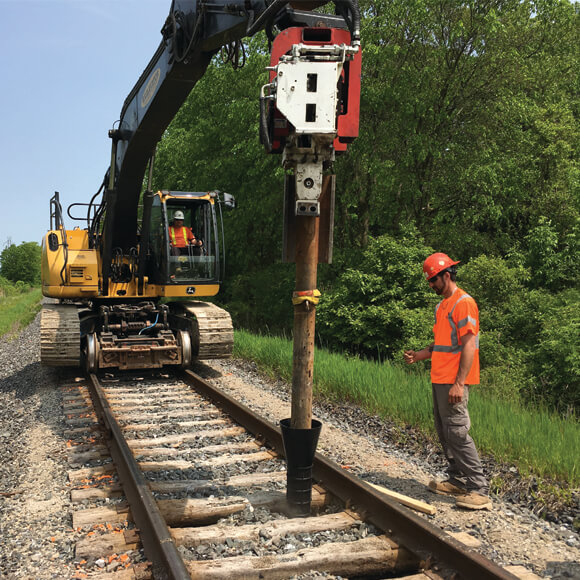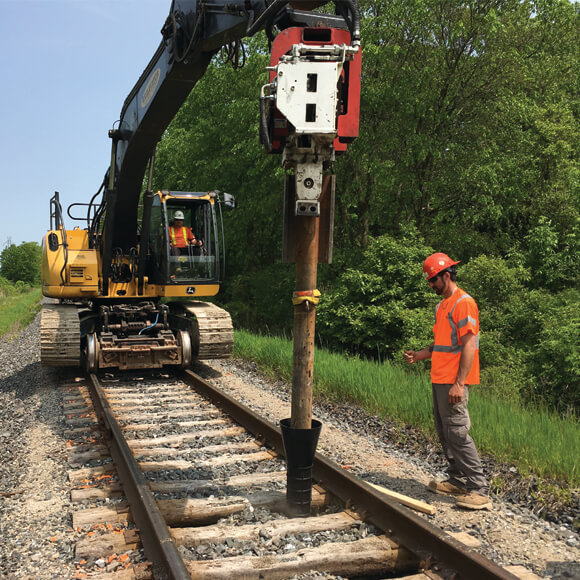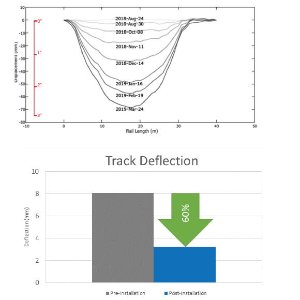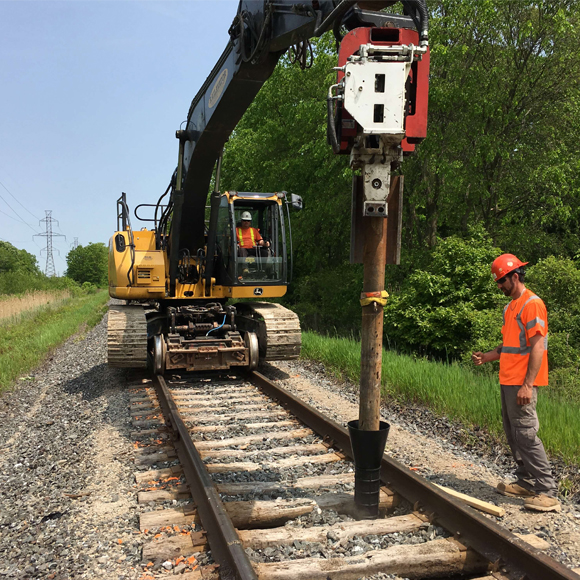
Canadian National St. Clair Subdivision
The Geopier GeoSpike℠ system was used to reinforce the subgrade at a consistently problematic section of track which reduced dynamic deflections of the railway by more than 60% without removing track, ties or ballast.
- Owner: Canadian National
- Geotechnical Engineer: Journeaux Associates
Canadian-National (CN) maintenance crews are familiar with this section of rail in rural Ontario, south of Sarnia, due to the frequency of re-ballasting and subgrade repairs that plagued this section for many years. CN chose the Geopier GeoSpikeSM system to remediate this problem area for a 55m (180 ft) section of track. This section had chronic settlement and deflection issues resulting from very soft and wet subgrade conditions below the ballast. Deflection monitoring of this track section showed that more than 75 mm (3 in) of deflection had occurred since the previous repair. The soil stratigraphy below the track structure consists of a mixed ballast and soils stratum 1.4 to 1.8 m (4.5 to 6 ft) thick, overlying a medium stiff clay deposit becoming stiff to very stiff at depths of 2 to 3m (6.5 to 10 ft).
The Geopier solution for this project consisted of 1.2 to 2.1m (4 to 6 ft) GeoSpike℠ elements installed so that the GeoSpike tops were 0.3 to 0.6m (1 to 2 ft) below the bottom of the existing ties. The GeoSpike elements were installed between the rails in pairs, spaced at every other tie to resist a Cooper E-80 derived working load of 15 kips (67 kN) per GeoSpike. More than 120 GeoSpikes were installed with a hi-rail mounted excavator without removing track, ties, or ballast in less than 2 days. After GeoSpike installation, the work area was re-ballasted and the rail lines were re-aligned.
Track monitoring at the site was performed by researchers from Queens University in Ontario, Canada. Pre-installation Shape Array (SAA) measurements revealed that this section of track was experiencing progressive, cumulative deflections, in excess of 75 mm prior to GeoSpike installations.
Queens University also performed a short-term deflection survey using high-speed optical survey equipment to record rail and tie deflections during passing trains. Tie deflections were reduced by 60% after GeoSpike installations.



